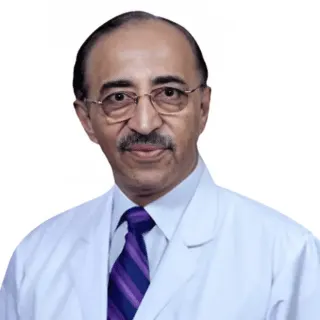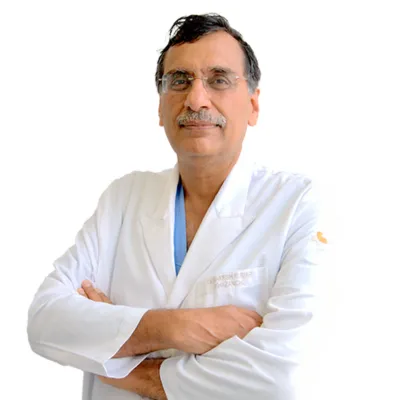Best Cardiologists in Artemis Hospital Gurgaon
 10 December,2025
Read More
10 December,2025
Read More
Starting From: USD 480 - USD 1000
Hospitalization Days: 1 Days
Procedure Duration: 45 Min - 60 Min
Buccal Fat Removal is affordable in India. The cost of Buccal Fat Removal in India lies between USD 480 - USD 1000. The exact procedure price depends on multiple factors such as the surgeon's experience, type of hospital, severity of the condition, patient's general condition,�etc.
Buccal fat removal is a cosmetic procedure aimed at reducing chubby cheeks by removing excess fat pads from the lower face. It's often sought by individuals who desire a more defined jawline and cheekbones. During the surgery, a small incision is made inside the mouth, allowing the surgeon to access the buccal fat pads. The excess fat is carefully removed, sculpting the face for a slimmer appearance. Recovery is usually quick, with minimal discomfort. Results become noticeable as swelling subsides, typically within a few weeks. However, it's essential to consult with a qualified surgeon to discuss expectations and potential risks beforehand.
Buccal fat removal, a cosmetic procedure aimed at reducing the fullness of the cheeks, may be desired for several reasons:
Buccal fat removal can provide individuals with the opportunity to achieve a more sculpted and balanced facial appearance, enhancing self-confidence and satisfaction with their overall look. However, it's essential to consult with a qualified surgeon to discuss expectations, potential risks, and suitability for the procedure.
Buccal fat removal is a cosmetic procedure aimed at reducing cheek fullness, and can be performed using different techniques tailored to individual needs and desired outcomes. Let's explore the common types of buccal fat removal procedures
Each type of buccal fat removal procedure offers unique advantages and considerations, and the choice of technique depends on factors such as the patient's facial anatomy, aesthetic goals, and surgeon's expertise. Consulting with a qualified plastic surgeon is essential to determine the most suitable approach for achieving desired outcomes while ensuring optimal safety and satisfaction.
The cost of buccal fat removal surgery can vary depending on several factors:
The selection of patients for buccal fat removal surgery involves a comprehensive evaluation by a qualified plastic surgeon to ensure that the procedure is appropriate and safe for the individual. Several factors are considered to determine candidacy:
Surgeons can effectively select suitable candidates for buccal fat removal surgery, ensuring optimal outcomes and patient satisfaction.
Before undergoing buccal fat removal surgery, patients typically undergo a series of diagnostic tests and evaluations to determine their suitability for the procedure. Here's an overview of the assessments commonly performed
By conducting these diagnostic tests and evaluations, surgeons can determine the need for buccal fat removal surgery and ensure that patients are well-informed and prepared for the procedure.
Buccal fat removal like any surgical procedure, carries both risks and benefits. Patients need to understand these factors before undergoing the surgery
The decision to undergo buccal fat removal should be carefully weighed, considering both the potential risks and benefits in consultation with a qualified plastic surgeon.
The recovery and rehabilitation process following buccal fat removal surgery typically involves several stages, with patients gradually returning to their normal activities over time:
While the initial recovery period may involve some discomfort and visible effects, patients can expect gradual improvement and ultimately achieve a more sculpted facial appearance with buccal fat removal.
Buccal fat removal is a surgical procedure performed to reduce the fullness of the cheeks by removing excess fat pads from the buccal fat pad area. The procedure is typically conducted on an outpatient basis under local or general anesthesia and involves several key steps
Buccal fat removal is a precise surgical procedure that can effectively enhance facial contours and achieve a more sculpted appearance in the cheeks.

Senior Consultant
Cosmetic Surgeon
Fortis Memorial Research Institute (FMRI), Gurgaon

Chairman
Cosmetic Surgeon
Medanta - The Medicity Hospital, Gurgaon
Doctor of Pharmacy
Dr. Deepanshu Siwach is a skilled clinical pharmacist with a Doctor of Pharmacy degree.?He has 4+?years of experience and has worked with thousands of patients. He has been associated with some of the top hospitals, such as Artemis Gurgaon.
Dr. Deepanshu Siwach is a skilled clinical pharmacist with a Doctor of Pharmacy degree.?He has 4+?years of experience and has worked with thousands of patients. He has been associated with some of the top hospitals, such as Artemis Gurgaon....
With over 23 years of experience, Dr. Vipul Nanda, an eminent Plastic and Cosmetic Surgeon, excels in surgical and non-surgical procedures, including filler, mesotherapy, laser, and dermatology....
Buccal fat removal surgery typically takes about 30 minutes to an hour to complete, depending on the complexity of the procedure and the surgeon's technique. Factors such as patient anatomy and individual goals may also influence the duration. It is considered a relatively quick outpatient procedure performed under local or general anesthesia.
The success rate of buccal fat removal is generally high, with many patients achieving their desired results of reduced cheek fullness. However, individual outcomes may vary based on factors such as surgical technique, patient anatomy, and post-operative care. Consultation with a qualified plastic surgeon can provide personalized information regarding expected results and potential risks.
The recovery process after buccal fat removal involves initial swelling and bruising, which gradually subside over several weeks. Patients may experience temporary discomfort and are advised to follow post-operative instructions provided by their surgeon. Normal activities can typically be resumed within a week, with final results becoming apparent as swelling resolves over a few months.
After buccal fat removal surgery, patients are typically provided with pain management options such as prescribed medication to alleviate discomfort. Surgeons may recommend over-the-counter pain relievers or prescribe stronger medication as needed. Following post-operative instructions, including proper medication use and rest, can help manage pain effectively during the recovery process.
Patients can usually return to normal activities within a week after buccal fat removal surgery, although strenuous activities should be avoided during the initial recovery period. Recovery times may vary depending on individual healing factors and the extent of the procedure. It's essential to follow post-operative instructions provided by the surgeon to ensure a smooth recovery and optimal results.
Physical therapy is generally not required after buccal fat removal surgery, as it primarily involves the removal of excess fat from the cheeks. However, patients are encouraged to follow post-operative instructions provided by their surgeon, which may include gentle facial exercises to aid in recovery and optimize results. Consultation with a qualified plastic surgeon can provide personalized guidance regarding post-operative care.
The results of buccal fat removal surgery are typically long-lasting. Once the excess fat pads are removed, the effects are permanent, barring significant weight fluctuations or ageing-related changes. However, individual results may vary, and maintaining a healthy lifestyle can help preserve the outcome of the procedure over time.
Insurance typically does not cover the cost of buccal fat removal surgery because it is considered a cosmetic procedure performed for aesthetic purposes rather than medical necessity. Patients are responsible for covering the expenses associated with the surgery, including consultation fees, surgical fees, and any related post-operative care costs.
After buccal fat removal, patients may benefit from maintaining a healthy lifestyle to optimize results. This includes following a balanced diet, staying hydrated, and engaging in regular exercise to support overall well-being and weight management. Avoiding smoking and excessive alcohol consumption can also promote optimal healing and long-term facial rejuvenation.
Yes, alternative treatments to buccal fat removal exist, such as facial contouring with injectable fillers or liposuction. Injectable fillers can provide temporary volume reduction, while liposuction offers a more invasive but effective method for fat removal. Consulting with a qualified plastic surgeon can help determine the most suitable treatment option based on individual goals and preferences.
Traditional buccal fat removal involves manual techniques performed by a surgeon, while robotic-assisted procedures utilize robotic technology to assist in fat removal. Robotic systems offer enhanced precision and control during surgery, potentially reducing surgical trauma and improving outcomes. However, both methods aim to achieve similar results in reducing cheek fullness, with the choice often depending on surgeon preference and patient needs.
Post-surgery, gentle facial exercises like smiling and chewing gum can aid in recovery and promote circulation. However, it's crucial to follow your surgeon's instructions to avoid strenuous activities that could strain the surgical site. Consultation with a qualified healthcare provider can provide personalized guidance on the most suitable exercises for your recovery process.
The Art of Effective Communication
 10 December,2025
Read More
10 December,2025
Read More
 09 December,2025
Read More
09 December,2025
Read More
 05 December,2025
Read More
05 December,2025
Read More
 04 December,2025
Read More
04 December,2025
Read More
 27 November,2025
Read More
27 November,2025
Read More
 25 November,2025
Read More
25 November,2025
Read More